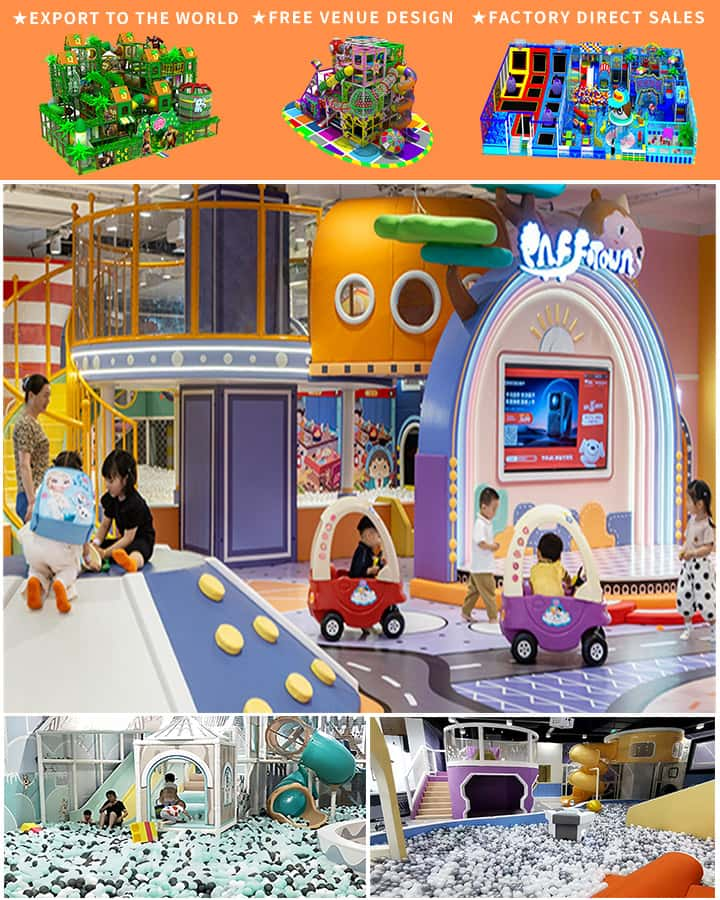Designing an indoor play area that captivates children’s imaginations while ensuring their safety is a delicate balance that requires thoughtful planning and creativity. Whether you are transforming a spare room, a basement, or even a corner of your living space, the right design can make all the difference. Here are some essential tips to help you create a fun, engaging, and safe indoor play area for kids.
1. Safety First
When it comes to designing an indoor play area, safety should always be your top priority. Start by choosing age-appropriate toys and equipment. Ensure that any furniture is sturdy and free from sharp edges or corners. Install soft flooring materials like foam tiles, carpet, or rubber mats to cushion falls. Additionally, keep smaller objects out of reach to prevent choking hazards, especially for younger children.
2. Functional Zones
To make the most out of your indoor play area, divide it into functional zones. Each zone should cater to different types of play activities. For instance:
- Creative Corner: Set up an arts and crafts station with tables, chairs, storage for supplies, and easels. Allow kids to explore their creativity with paints, markers, and crafting materials.
- Reading Nook: Create a cozy reading corner with comfortable seating, shelves filled with books, and good lighting. This quiet space encourages a love for reading and learning.
- Physical Activity Zone: Include equipment for active play, such as mini trampolines, climbing walls, or tunnels. This helps children expend energy and develop motor skills.

3. Color and Decor
The colors you choose for your play area can have a significant impact on its overall atmosphere. Bright, cheerful colors can stimulate creativity and excitement. Consider using wall decals, murals, or themed decorations related to favorite characters or stories to enhance the play experience. Remember, the goal is to create an inviting and stimulating environment.
4. Storage Solutions
Keeping the play area organized is crucial for both safety and convenience. Invest in smart storage solutions like bins, shelves, and cubbies. Label each storage unit to encourage children to tidy up after themselves. Clear containers allow kids to see what’s inside, making it easier for them to find and put away toys.
5. Versatile Furniture
Opt for versatile furniture that can adapt to various activities. Foldable tables and chairs, for example, can be used for art projects, snack time, or pretend play. Storage benches provide seating as well as a place to keep toys out of sight when not in use. Multipurpose furniture maximizes space efficiency and flexibility.
6. Incorporate Natural Elements
Bringing a touch of nature indoors can be highly beneficial. Incorporate elements like indoor plants, which not only improve air quality but also add a calming aesthetic. You could even use natural materials like wooden toys or fabrics made from organic fibers to create a more eco-friendly play environment.
7. Interactive Technology
In today’s digital age, incorporating interactive technology can be a great addition to your indoor play area. Educational apps, video games, and interactive whiteboards can supplement traditional play, offering both entertainment and learning opportunities. However, ensure screen time is moderated and balanced with physical and creative activities.
Conclusion
Designing an indoor play area requires careful consideration of safety, functionality, and creativity. By following these essential tips—focusing on safety, creating functional zones, using vibrant decor, organizing with smart storage solutions, opting for versatile furniture, including natural elements, and integrating technology sensibly—you can create a dynamic space that fosters children’s development and provides endless hours of enjoyable play. With thoughtful planning, your indoor play area will become a cherished space where imagination and adventure know no bounds.




